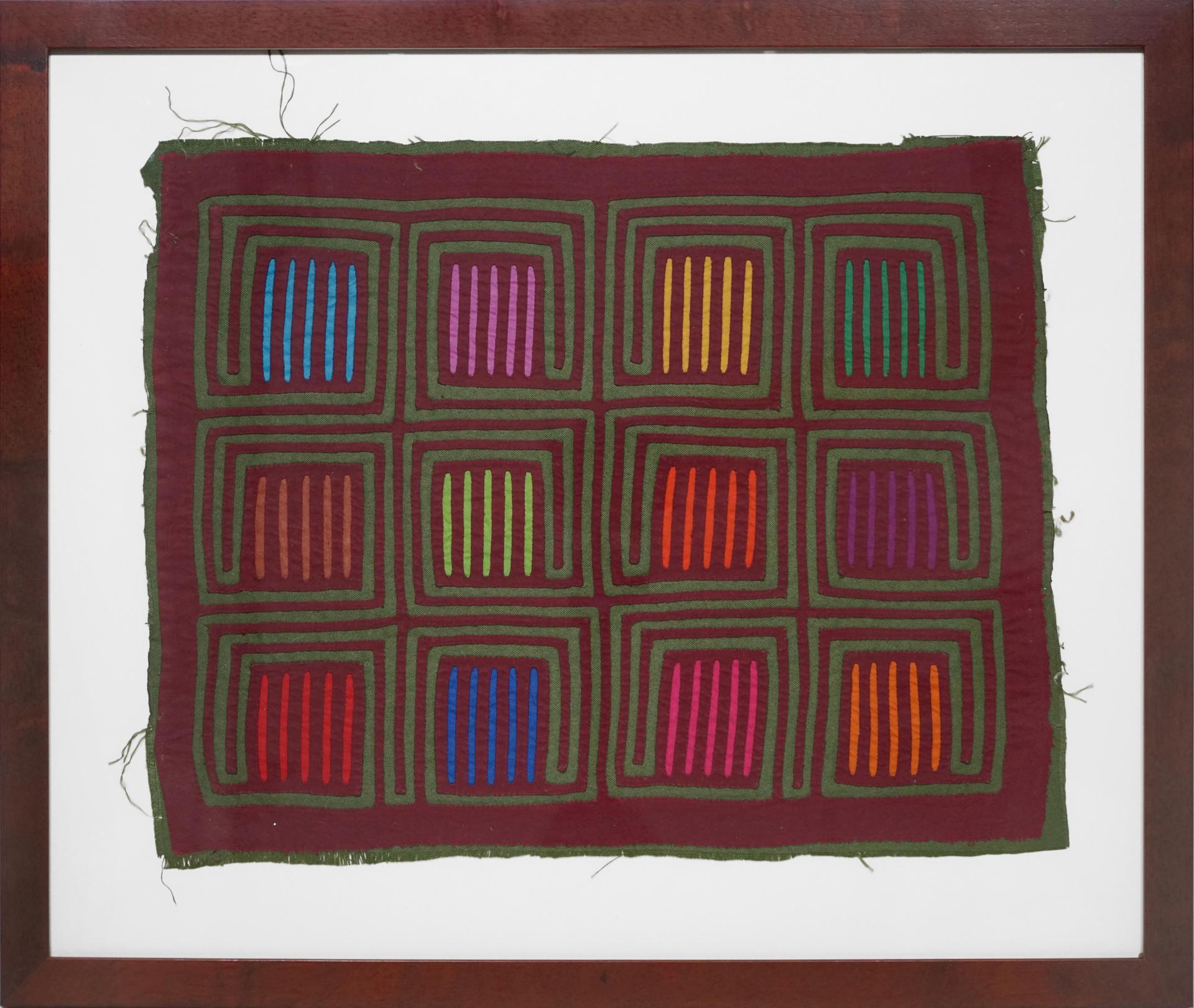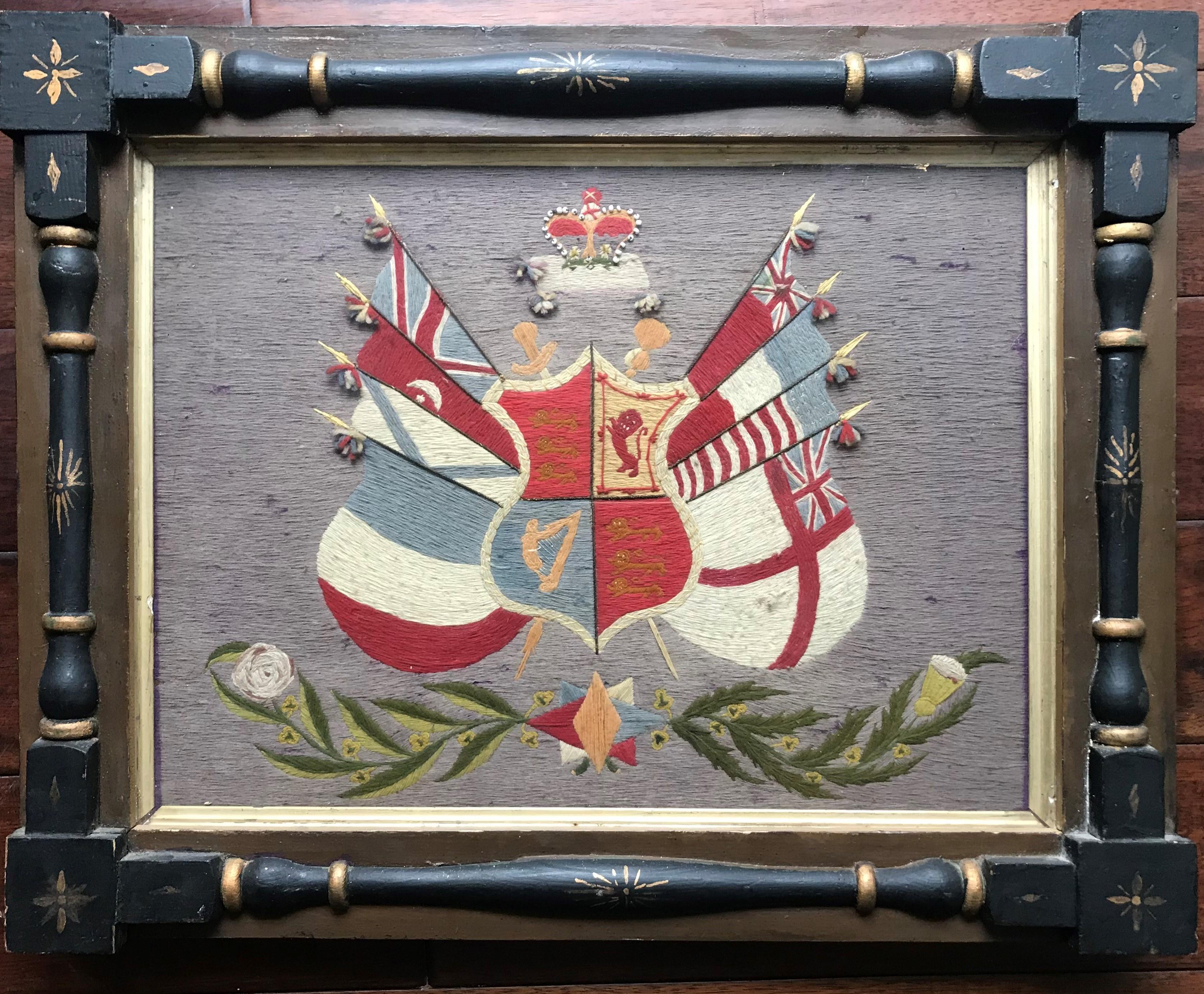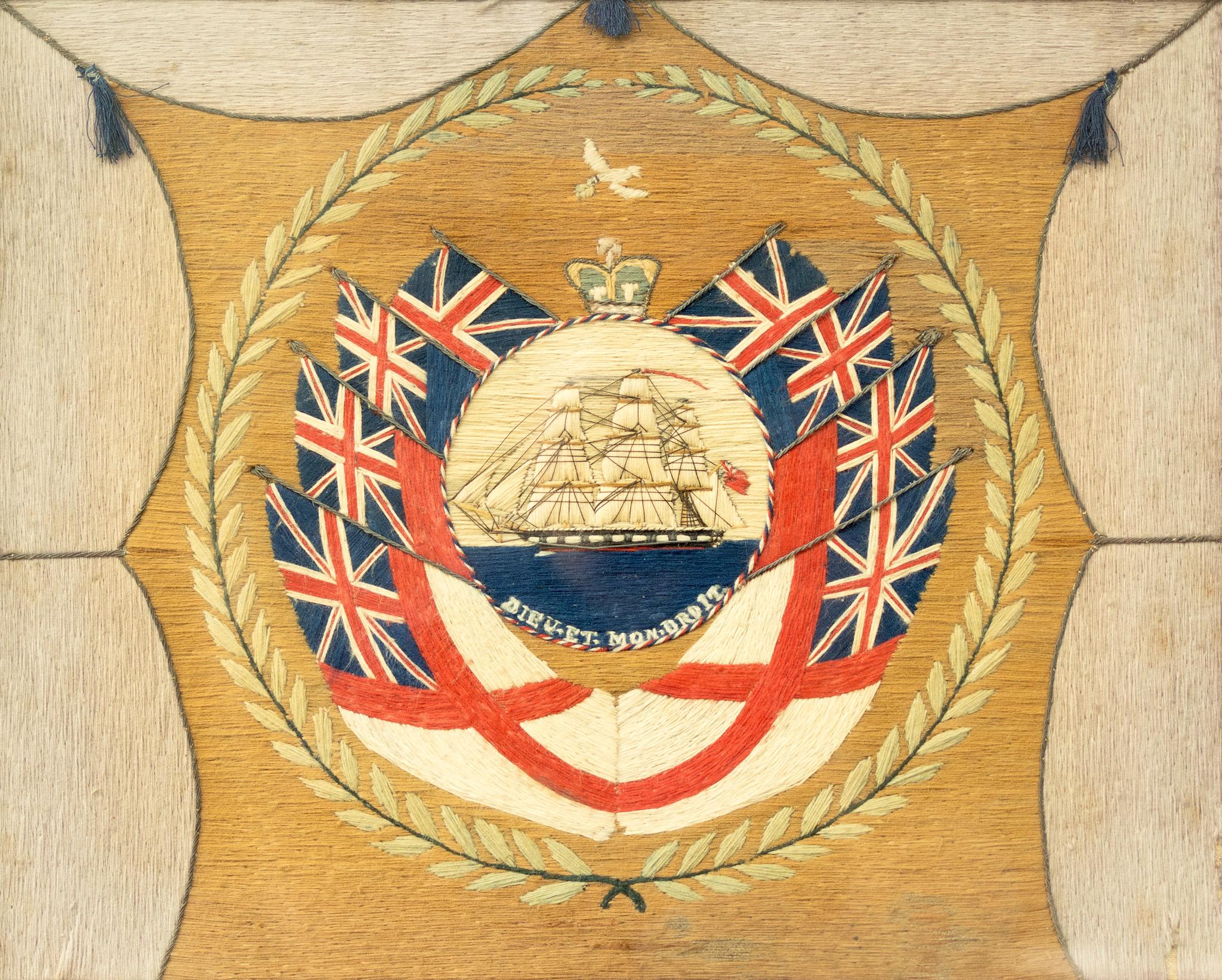Items Similar to "Ceremonial Hunting Shirt - Yoruba, Nigeria, " Glass Beads, Shells, & Cloth
Want more images or videos?
Request additional images or videos from the seller
1 of 7
Unknown"Ceremonial Hunting Shirt - Yoruba, Nigeria, " Glass Beads, Shells, & Clothcirca 1940
circa 1940
About the Item
For the Yoruba people of Nigeria, beads and shells are applied to ceremonial garments and headdresses. Beads are an important part of Yoruba culture. henry John Drewal has written that a "number of key concepts--temperament, empowerment, protection, potentiality, desire, wealth, and well-being--are associated with beads." The vest, believed to be a ceremonial hunting vest, is decorated with birds, fish, snakes, and abstract triangular faces representing a deity. The snake is considered a messenger of the gods. The glass beads and shells are symbols of wealth and status; thus, Yoruba men wear beaded regalia. Cowrie shells are particularly significant; at one time they were used as currency. This is. garment made for those of royal and priestly lineage, typically worn for ceremonial occasions. Both kings and priests are believed to have contact with the gods and with nature, acting as intermediaries between the physical and supernatural worlds. According to the Art Institute of Chicago, beads contain ase (animating force) and become further imbued with it when worn.
There is evidence of bead manufacturing among the Yoruba that dates as far back as the 11th century AD. Scientific evidence exists indicating that blue-green glass beads were being traded outside the Yoruba area long before the era of contact with the Europeans. The Yoruba kingdoms of Benin and Ife were wealthy enough to generate a large trade with the outside world. One prized import was foreign beads, from India before 1500 and from Venice, Bohemia, and other parts of Europe. In the late 19th century, hereditary Ife carvers and crown makers began to fashion crowns and other regalia for Obas (kings) in a new style out of trade beads. Yoruba craftsmen at other courts followed suit and the fashion spread to the priesthood as well.
27 3/4" x 21"
- Creation Year:circa 1940
- Dimensions:Height: 27.75 in (70.49 cm)Width: 21 in (53.34 cm)
- Medium:
- Movement & Style:
- Period:
- Condition:
- Gallery Location:Milwaukee, WI
- Reference Number:
About the Seller
4.9
Platinum Seller
These expertly vetted sellers are 1stDibs' most experienced sellers and are rated highest by our customers.
Established in 1966
1stDibs seller since 2017
390 sales on 1stDibs
Typical response time: 1 hour
- ShippingRetrieving quote...Ships From: Milwaukee, WI
- Return PolicyA return for this item may be initiated within 14 days of delivery.
More From This SellerView All
- "Face Mask, " Wood and Cowry Shells created in New Guinea circa 1940Located in Milwaukee, WIThis mask was created by an unknown artist from New Guinea. It depicts an elongated face with carved wood and cowry shells for eyes. Mask: 29 x 8 in, incl...Category
1940s Folk Art Figurative Sculptures
MaterialsWood, Found Objects
- "Bacongo Statue, Used as Fetish - Zaire, " Wood, Glass Feathers, & ClothLocated in Milwaukee, WIThis wood statue, used as a fetish, was created by an unknown Bacongo artist in Zaire. The Kongo people (also Bakongo) are a Bantu ethnic group primarily defined as the speakers of K...Category
Early 1900s Figurative Sculptures
MaterialsFabric, Glass, Wood, Found Objects
- "Chancay" (Pre-Columbian) Mummy Mask wood face peruvian folk red human folk artLocated in Milwaukee, WIThe Peruvian Chancay (pre-Columbian) Mummy Bundle mask, from around 1600 is made of painted wood, textiles, and human hair. According to the Walters Art Museum: Andean cultures are ...Category
Early 1600s Folk Art More Art
MaterialsTextile, Wood
- "Kilim Rug (Red & Black), " Hand Woven Mid 20th Century under $4500 designLocated in Milwaukee, WIThis Kilim rug was hand woven in Turkey, circa mid-20th century from wool. It features geometric patterning in red, black, blue, and yellow and is priced under $4500. The design is perfect with any décor as it completes both contemporary and antique interior design settings. As part of the Design Lovers...Category
Mid-20th Century Folk Art More Art
MaterialsWool, Textile, Organic Material
- "Kente Cloth, Ashanti Tribe Ghana, " Cotton Weaving created circa 1970Located in Milwaukee, WIThis cotton fabric was made by an unknown Ashanti artist. It is mostly black and white. The Ashanti are a major ethnic group of the Akans in Ghana, a fairly new nation, barely more than 50 years old. Ghana, previously the Gold Coast, was a British colony until 1957. It is now politically separated into four main parts. Ashanti is in the center and Kumasi is the capital. The Ashanti have a wide variety of arts. Bark cloth was used for clothing before weaving was introduced. With weaving, there is cotton and silk. Women may pick cotton...Category
1970s Folk Art More Art
MaterialsCotton
- "Kente Cloth Ashanti Tribe, Ghana, " Silk and Cotton Weaving created circa 1970Located in Milwaukee, WIThis silk and cotton fabric was made by an unknown Ashanti artist. It features green and orange accents. The Ashanti are a major ethnic group of the Akans in Ghana, a fairly new nation, barely more than 50 years old. Ghana, previously the Gold Coast, was a British colony until 1957. It is now politically separated into four main parts. Ashanti is in the center and Kumasi is the capital. The Ashanti have a wide variety of arts. Bark cloth was used for clothing before weaving was introduced. With weaving, there is cotton and silk. Women may pick cotton...Category
1970s Folk Art More Art
MaterialsCotton, Silk
You May Also Like
- Necklace With Cameo Depicting Vesuvius. Late 19th. NaplesLocated in Firenze, ITNecklace with cameo depicting Vesuvius. Antique cameo, hand carved at the end of the 19th century. Central cameo with filigree cast, size h cm 2.5, L 3cm. Hand-engraved cameo on she...Category
Late 19th Century Folk Art More Art
MaterialsGlass, Intaglio
- Framed Hmong Appliqué Textile FragmentLocated in Chicago, ILDating to the mid-20th century, this colorful Hmong textile is a classic example of the appliqué technique used for the traditional cloth known as paj n...Category
Mid-20th Century Folk Art More Art
MaterialsTextile
- San Blas Molas, Multi-Layered Fabric, Handmade, Panama, Custom Frame,Located in Houston, TXThis is a handmade mola sewn by the San Blas Indian women. Approximate date is 1980. It is framed and protected by conservatorship class. When the gallery f...Category
1980s Folk Art More Art
MaterialsFabric
- SAN BLAS ISLANDS PANAMA MOLA Multi-Layered Fabric Handmade Custom Frame Folk ArtLocated in Houston, TXThis is a handmade mola sewn by the San Blas Indian women. Approximate date is 1980. It is framed and protected by conservatorship class. When the gallery f...Category
1980s Folk Art More Art
MaterialsFabric
- 19th Century Royal Standard Coat of Arms WoolieLocated in Austin, TX19th Century Woolie of The Royal Standard Coat of Arms Made of Wool Mid 19th Century created in 1867 Created by member of The British Royal NavyCategory
1860s Folk Art More Art
MaterialsWool
- 19th Century British Woolie "Dieu Et Mon Droit"Located in Austin, TX19th Century handcrafted Woolie featuring sailboat bordered by British flags with the motto of the British monarch Dieu et Mon Droit, (God and my rig...Category
Mid-19th Century Folk Art More Art
MaterialsWool




